Photos: Prehistoric village holds Bronze Age treasures
Tales from the Bronze Age
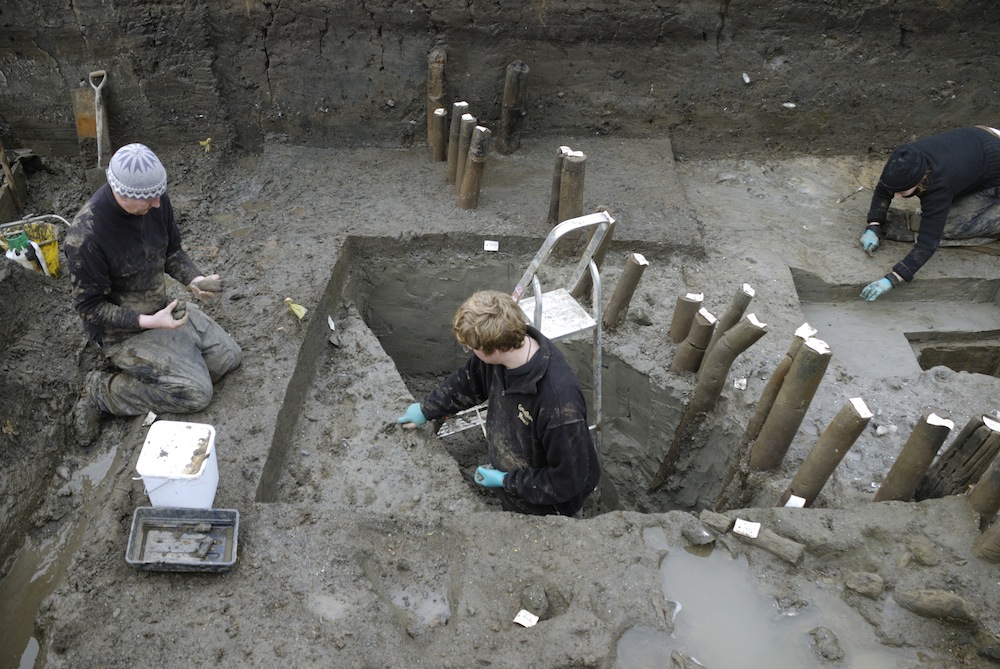
Archaeologists from Cambridge University are bringing to an end an extensive 10-month excavation of a Bronze Age settlement at Must Farm in Cambridgeshire, in the marshlands of eastern England. The small village was built on stilts above a river that once ran across the site, just a few years before it was destroyed in a fire sometime between 1290 B.C. and 1250 B.C.
The researchers think the fire that destroyed the prehistoric settlement may have been started deliberately, possibly in a raid by hostile warriors. This image shows the excavation of the wooden palisade that was built around the stilt houses of the village, which likely defended the settlement from such raids.
Related: Read the full story about the Must Farm fire
Village layout

The researchers think the fire that destroyed the prehistoric settlement may have been started deliberately, possibly in a raid by hostile warriors. This image shows the excavation of the wooden palisade that was built around the stilt houses of the village, which likely defended the settlement from such raids.
The researchers think the settlement was made up of eight or nine circular wooden houses and was home to several families. Four houses have been excavated — the remains of the others are thought to have been destroyed by quarrying at Must Farm before it was recognized as an archaeological site.
Catastrophic fire
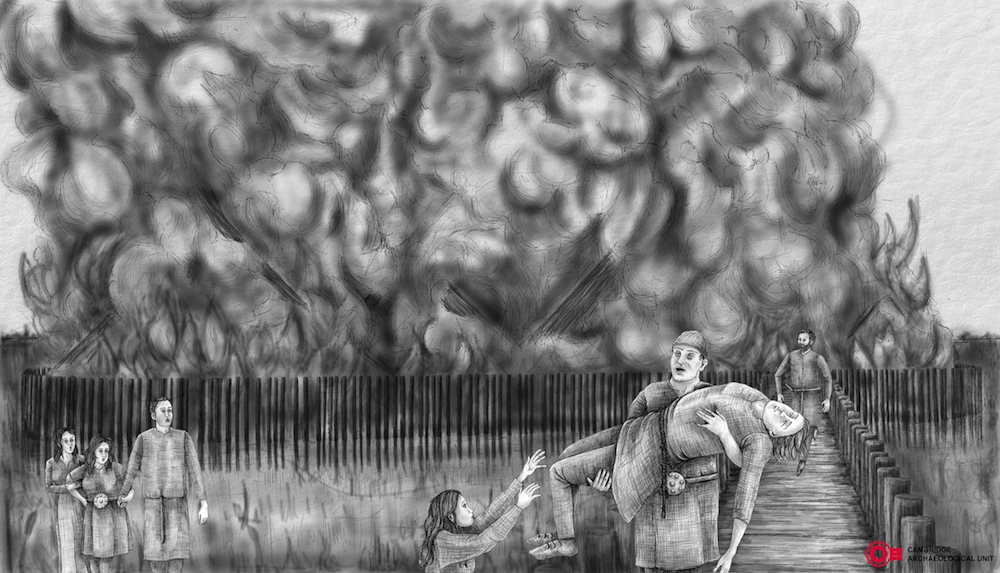
A reconstruction of the fire that brought about the end of the Must Farm settlement, based upon material recovered in the 2006 excavation.
Excavated roundhouse
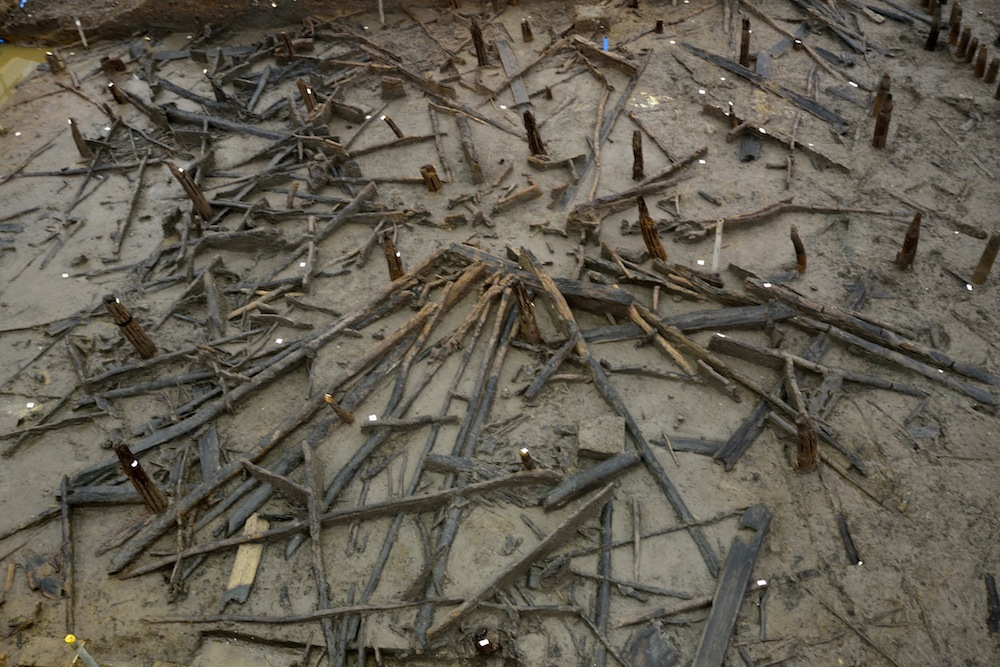
Studies by archeologists and fire investigators suggest that the settlement was destroyed in a single catastrophic fire.
It is not known what caused the fire, but the researchers note that it's unlikely the villagers would have let their household fires get out of control, especially when their houses were built directly over the water.
This image shows one of the four excavated roundhouses at Must Farm. The rings of wall posts are visible and the collapsed roof timbers lie almost like spokes in a wheel.
Fleeing the village
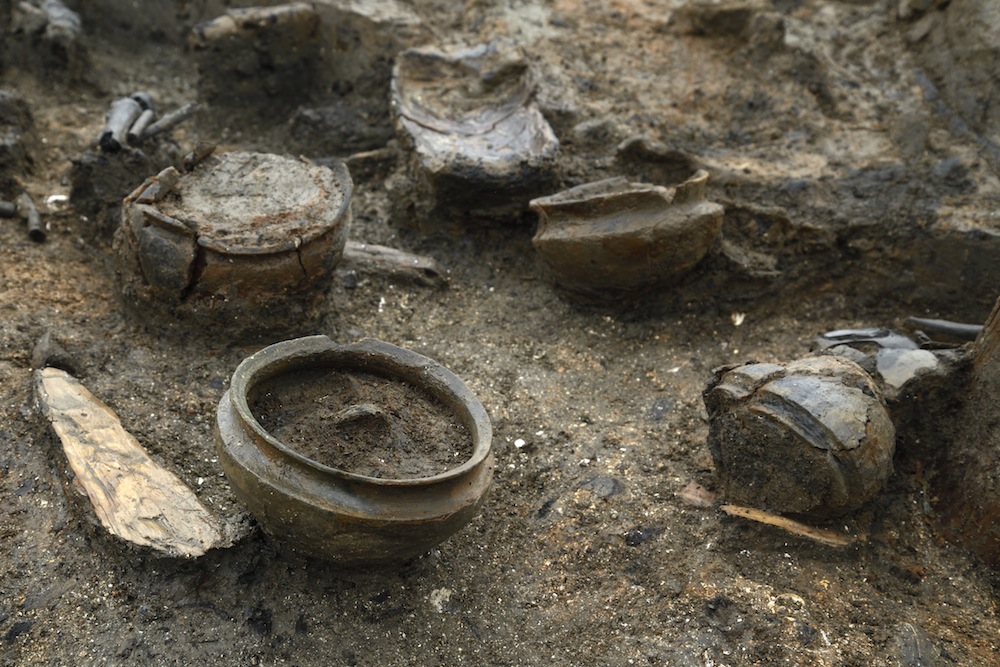
After the fire, the village buildings collapsed into the silt of the river and eventually became covered with a layer of clay.
Archaeologists have found an abundance of household objects left behind in the villagers' hurried flight, including clothes, jewelry, tools, weapons and boats. This image shows an array of household items, including several whole pots.
Evidence of trade
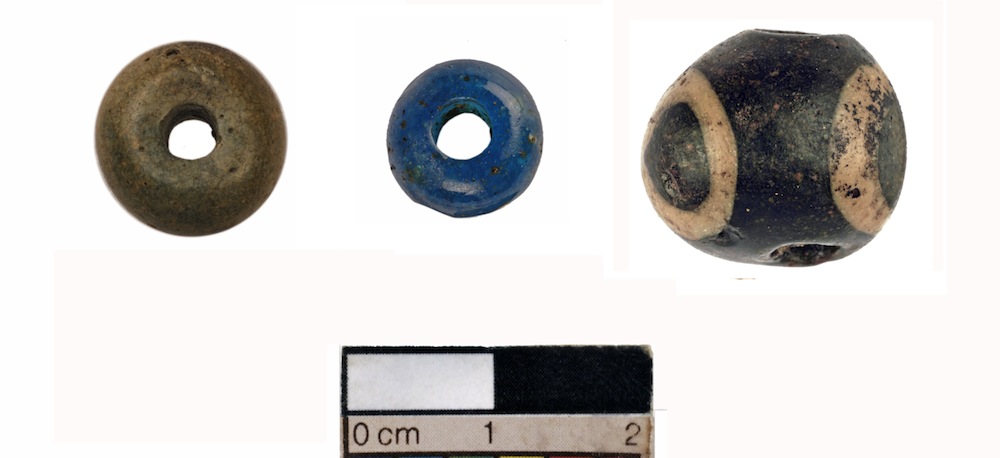
Archaeologists have found an abundance of household objects left behind in the villagers' hurried flight, including clothes, jewelry, tools, weapons and boats. This image shows an array of household items, including several whole pots.
The foreign finds include beads of amber thought to be from the Baltic region, blue glass beads from Syria or Turkey, and these ceramic beads thought to be from continental Europe or the Middle East.
Sign up for the Live Science daily newsletter now
Get the world’s most fascinating discoveries delivered straight to your inbox.
Finely woven
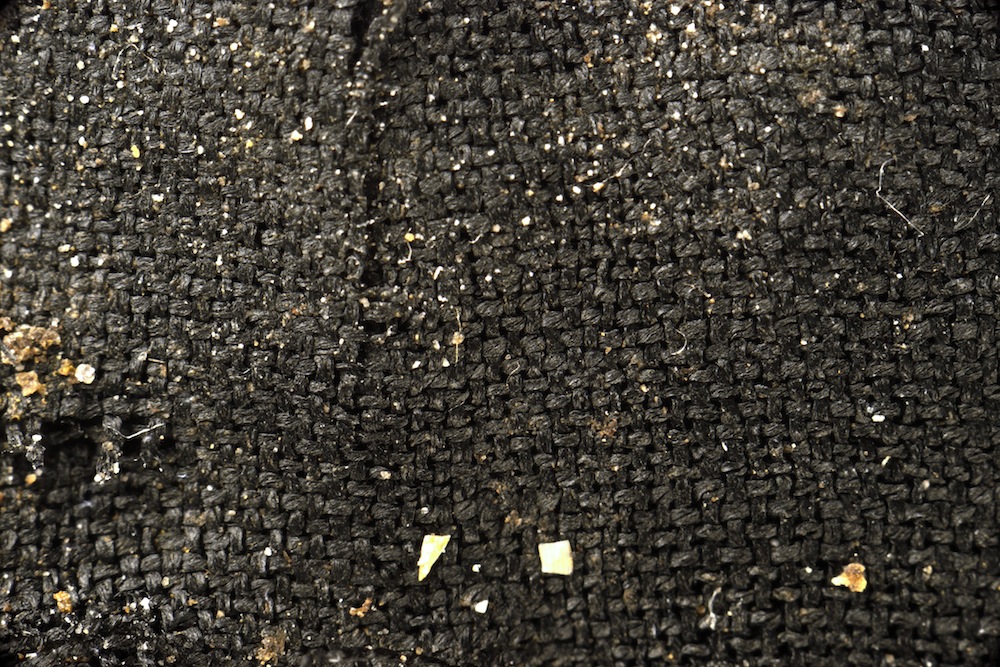
Among the finds are charred fragments of several different types of Bronze-Age woven fabrics, mainly linens spun from flax.
The researchers say they were used for clothing and other purposes, such as fish traps, and many pieces are very finely woven compared to Bronze Age fabrics found elsewhere.
Bronze-Age tools
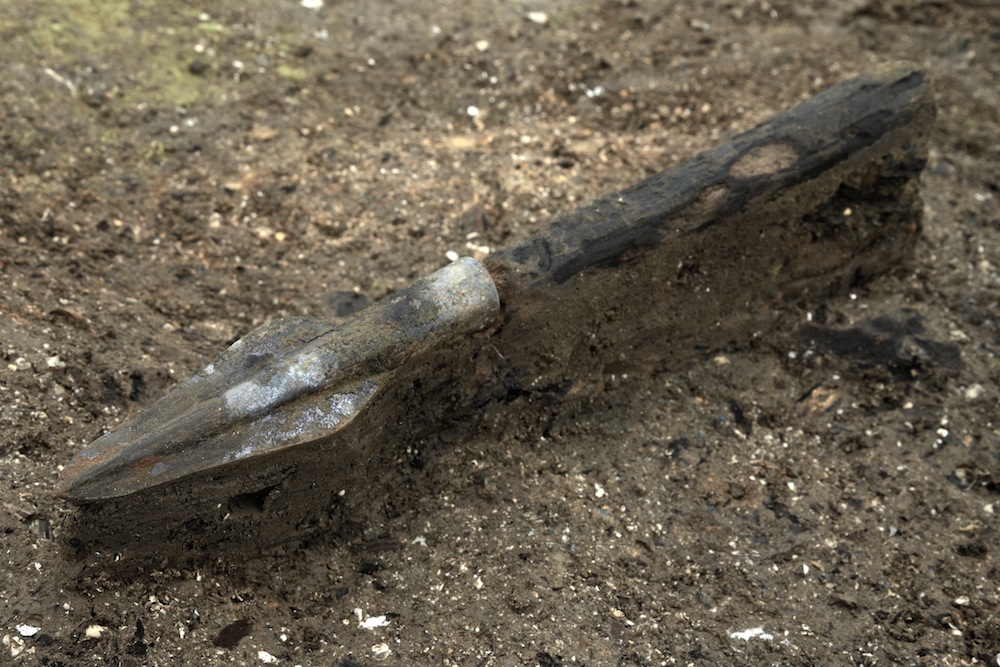
The damp clay of the marshlands helped preserve many wooden objects at the Must Farm site, including several boats made from logs, wooden buckets, kitchen implements and household tools.
The archaeologists also found several weapons and cutting tools, including bronze axes, sickles, razors and knives, as well as this bronze-tipped spear with its handle still attached.
Prehistoric wheel

Earlier this year, the researchers from the Cambridge Archaeology Unit at Must Farm revealed another rare treasure: a wooden wheel from a cart that was probably drawn by oxen. Measuring more than 3.3 feet (1 meter) across, the wheel is one of the oldest wheels ever found in Britain.
Originally published on Live Science.
Tom Metcalfe is a freelance journalist and regular Live Science contributor who is based in London in the United Kingdom. Tom writes mainly about science, space, archaeology, the Earth and the oceans. He has also written for the BBC, NBC News, National Geographic, Scientific American, Air & Space, and many others.










